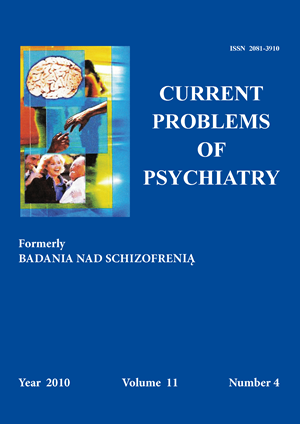Psychosomatic reactions of children from migration families
Słowa kluczowe:
psychosomatic reactions, children, migration familiesAbstrakt
The research conducted in families, separated as a result of economic migration, aimed to determine a situa-tion of the child remaining in long-lasting separation with one or both parents. Seventy seven (77) children aged 3 to 17 were qualified to the research. Interviews were conducted with the children on the basis of a questionnaire designed for the purposes of the study and allowing collecting research material.. The obtained results of the study on the random sample allowed determining proportions of exoduses among mothers and fathers and the form of care which is “organized” during the absence of the parents for the children. Separation with the parents for a longer time in the very early period of the childhood is undoubtedly a very traumatic experience for the child; surviving difficult emotions of the child by the parents supports the tendency to become withdrawn or starts me-chanisms of repression [1]. The situation of the child in the migrating family is very diverse and to a large extent depends on qualities of the relationships developed in the family before separation, either at the level of marital relationship or at the parent-child level. As Danielewicz points out, they constitute in a way a basis for creating diversity of “childhood face” of the child experiencing migration of parents [2].
Bibliografia
1. Wagner I. Sieroctwo społeczne – przyczyny, następstwa, formy kompensacji. Studium teoretyczno-badawcze. Wyższa Szkoła Pedagogiczna w Częstochowie; Częstochowa: 1997.
2. Danilewicz W. Dzieciństwo w rodzinie migracyjnej, W: Guz S. red., Dziecko a zagrożenia współczesnego świata. Wyd. UMCS; Lublin: 2008.
3. Namysłowska I. System rodzinny a zaburzenia psychosomatyczne, W: Szewczyk L., Skowrońskiej M. red., Zaburzenia psychosomatyczne u dzieci i młodzieży. Teoria i praktyka. Wydawnictwo Emu; Warszawa: 2003, s. 35-48.
4. Zorraquino J.C. Depresja u dzieci i młodzieży. ESPE; Kraków: 2002.
5. Tylka J. Psychosomatyka. UKSW; Warszawa: 2000.
6. Płużek Z. Psychologia pastoralna. Wydawnictwo ITKM; Kraków: 2002.
7. Cohen K., Auld F., Brooker H. Is alexithymia related to psychosomatic disorder and somatizing. J. Psychosom. Res., 1994; 38(2): 119-127.
8. De Barbaro B. Wprowadzenie do systemowego rozumienia rodziny. WUJ; Kraków: 1999.
9. Łopatkowa M. Samotność dziecka. WSiP; Warszawa: 1989.
10. Zbroszczyk-Szczepaniak M. Zaburzenia psychosomatyczne w praktyce pediatrycznej. W: Szewczyk L., Skowrońskiej M. red., Zaburzenia psychosomatyczne u dzieci i młodzieży. Teoria i praktyka. Wydawnictwo Emu; Warszawa: 2003, s. 19-25.
11. Wolańczyk T., Bryńska A. Zaburzenia psychosomatyczne w psychiatrii dzieci i młodzieży, W: Szewczyk L., Skowrońskiej M. red., Zaburzenia psychosomatyczne u dzieci i młodzieży. Teoria i praktyka. Wydawnictwo Emu; Warszawa: 2003, s. 25-34.
12. Józefik B. Strategie rodzinne, W: de Barbaro B. red., Wprowadzenie do systemowego rozumienia rodziny. Wydawnictwo UJ; Kraków: 1999, s. 69-78.


